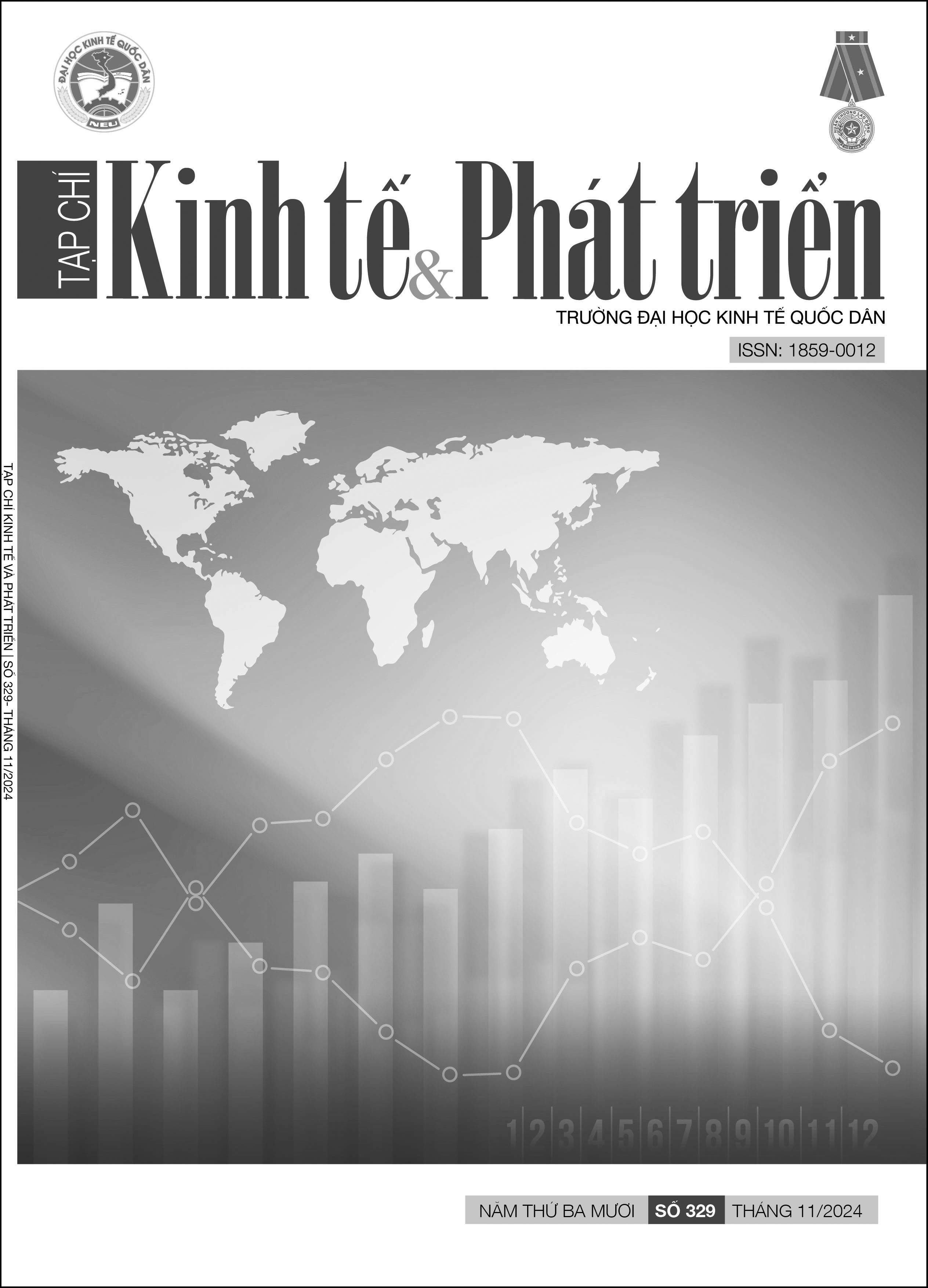Chuẩn mực địa phương, địa vị xã hội và hối lộ của người dân ở các quốc gia Châu Á mới nổi
DOI:
https://doi.org/10.33301/JED.VI.1759Từ khóa:
Chuẩn mực địa phương, địa vị xã hội, hối lộ, người dân, quốc gia châu Á mới nổiTóm tắt
Các nghiên cứu về tham nhũng chủ yếu tập trung vào động cơ kinh tế từ góc độ tổ chức, để lại khoảng trống giải thích tham nhũng từ địa vị xã hội và chuẩn mực địa phương ở cấp độ cá nhân. Nghiên cứu này xem xét tác động của chuẩn mực địa phương và địa vị xã hội đến hối lộ của người dân ở các nước châu Á mới nổi. Sử dụng mô hình Probit với dữ liệu từ khảo sát Phong vũ biểu Tham nhũng Toàn cầu, Chỉ số Dân chủ, nghiên cứu phát hiện (i) người nghèo và người thất nghiệp ít đưa hối lộ hơn, (ii) học vấn của người dân không tác động rõ ràng tới hối lộ, (iii) chuẩn mực địa phương vừa là yếu tố ảnh hưởng và đóng vai trò điều tiết tác động của địa vị xã hội đến hối lộ của người dân. Kết quả làm sáng tỏ lý thuyết cũng như cung cấp bằng chứng cho thiết kế chính sách phòng chống tham nhũng ở các quốc gia mới nổi.
Tài liệu tham khảo
Ades, A., & Di Tella, R. (1997), ‘The new economics of corruption: a survey and some new results’, Political Studies, 45(3), 496-515.
Akipin, A., & Sulaiman, D. (2019), ‘Village culture planning in increasing the income of the village community’, Proceedings of the International Conference on Arts and Design Education (ICADE 2018). DOI:10.2991/icade-18.2019.21.
Baker, E.H. (2014), ‘Socioeconomic Status, Definition’, In Cockerham, W.C., Dingwall, R. & Quah, S. (eds), The Wiley Blackwell Encyclopedia of Health, Illness, Behavior, and Society. DOI: https://doi.org/10.1002/9781118410868.wbehibs395.
Bicchieri, C., & Xiao, E. (2009), ‘Do the right thing: but only if others do so’, Journal of Behavioral Decision Making, 22(2), 191-208.
Bühren, C. (2020), ‘Staff Rotation as an Anti-Corruption Policy in China and in Germany: An Experimental Comparison’, Jahrbücher für Nationalökonomie und Statistik, 240(1), 1-18.
Dimant, E., & Schulte, T. (2016), ‘The nature of corruption: An interdisciplinary perspective’, German Law Journal, 17(1), 53-72.
Dong, B., Dulleck, U., & Torgler, B. (2012), ‘Conditional corruption’, Journal of Economic Psychology, 33, 609-627.
Economist Intelligence Unit. (2024), ‘Democracy index 2023: Age of conflict’, Retrieved from Economist Group. https://ourworldindata.org/grapher/democracy-index-eiu
Fisman, R., & Miguel, E. (2007), ‘Corruption, norms, and legal enforcement: Evidence from diplomatic parking tickets’, Journal of Political Economy, 115(6), 1020-1048.
Hellmann, O. (2017), ‘The historical origins of corruption in the developing world: a comparative analysis of East Asia’, Crime, Law and Social Change, 68(1-2), 145-165.
Hunt, J., & Laszlo, S. (2012), ‘Is bribery really regressive? Bribery’s costs, benefits, and mechanisms’, World Development, 40(2), 355-372.
Jain, A. K. (2001), ‘Corruption: A Review’, Journal of Economic Surveys, 15(1), 71-121.
Lambsdorff, G. J. (2010), ‘Who accepts bribery? Evidence from a global household survey’, Diskussionsbeitrag, Nr. V-61-10, University of Passau, Faculty of Business and Economics.
Lavena, C. F. (2013), ‘What determines permissiveness toward corruption? A study of attitudes in Latin America’, Public Integrity, 15(4), 345-366.
Lê Quang Cảnh (2018), ‘Vị thế xã hội, văn hóa và hối lộ của người dân Việt Nam’, Tạp chí Kinh tế & Phát triển, 252(2), 2-10.
Lin, M.-W., & Yu, C. (2014), ‘Can corruption be measured? Comparing global versus local perceptions of corruption in East and Southeast Asia’, Journal of Comparative Policy Analysis: Research and Practice, 16(2), 140-157.
Maeda, K., & Ziegfeld, A. (2015), ‘Socioeconomic status and corruption perceptions around the world’, Research & Politics, 2(2), 1-9.
Mauro, P. (1995), ‘Corruption and growth’, The Quarterly Journal of Economics, 110(3), 681-712.
Melgar, N., Rossi, M., & Smith, T. W. (2010), ‘The perception of corruption’, International Journal of Public Opinion Research, 22(1), 120-131.
Nguyen, P. A., & Le, Q. C. (2022), ‘Socioeconomic status, norms and bribe-giving behaviors among citizens of Vietnam’, International Journal of Public Administration, 45(1), 37-48.
Nguyen, T. V., Ho, B. D., Le, C. Q., & Nguyen, H. V. (2016), ‘Strategic and transactional costs of corruption: perspectives from Vietnamese firms’, Crime, Law and Social Change, 65(4-5), 351-374.
Nguyen, V. T., Le, N. T. B., Dinh, H. L. H., & Pham, H. T. L. (2020), ‘Do entrepreneurial firms suffer more from bribery? An empirical study of businesses in Vietnam’, Post-Communist Economies, 32(7), 877-903.
Olken, B. (2009), ‘Corruption perceptions vs. corruption reality’, Journal of Public Economics, 93(950-964).
Rothstein, B., & Uslaner, E. M. (2005), ‘All for all: Equality, corruption, and social trust’, World Politics, 58(1), 41-72.
Sundstrom, A. (2019), ‘Why do people pay bribes? A survey experiment with resource users’, Social Science Quarterly, 100(3), 725-735.
Treisman, D. (2007), ‘What have we learned about the causes of corruption from ten years of cross-national empirical research?’, Annual Review of Political Science, 10, 211-244.
Truex, R. (2011), ‘Corruption, attitudes, and education: Survey evidence from Nepal’, World Development, 39(7), 1133-1142.





